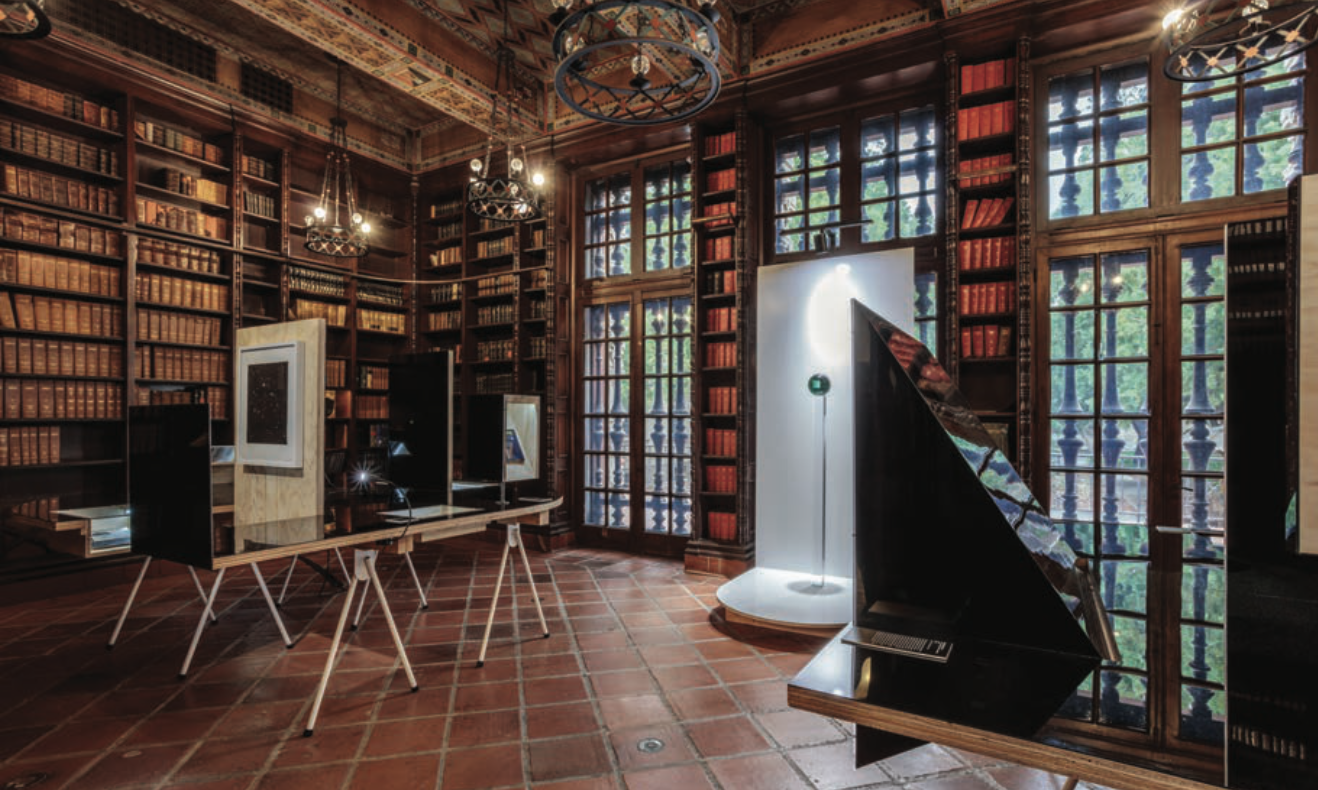Crossing Over: An Arts and Sciences Fusion at Caltech
From September 27 to December 15, 2024, Crossing Over: Art and Science at Caltech, 1920–2020 (PST ART), an expansive public exhibition, unfolds across Caltech’s campus, offering visitors a unique exploration of the intersection between art and science. Presented as part of the Getty’s PST ART: Art & Science Collide program, Crossing Over spans six distinct indoor and outdoor venues on Caltech’s campus, featuring an array of scientific drawings, paintings, photographs, films, instruments, molecular models, and rare archival materials from the histories of Caltech and the Jet Propulsion Laboratory (JPL).
Peter Collopy, university archivist and head of archives and special collections at Caltech, played a central role in curating this exhibition. Reflecting on its inception, he noted, “The Getty Foundation organizes an event every five years called PST Art, and this time the theme is art and science. Caltech, of course, is not an art museum, but if the theme is art and science, we could approach it from the science side.” This partnership with the Getty allowed Caltech to highlight the historical and ongoing collaborations between scientists and artists, showcasing how these two disciplines intersect to enrich both fields.
The exhibition is organized into three thematic sections: The Infinite Lawn, Time Stream, and Powers of Ten, each located in different parts of the campus. These sections guide viewers through perspectives ranging from the vastness of the universe—the “universe without,” as represented by stars, moons, planets, and galaxies—to the intricacies of the “universe within,” seen through cells, genes, molecules, atoms, and subatomic particles. Unique installations by critically acclaimed artists such as Lita Albuquerque, Jane Brucker, Lia Halloran, and others further augment the display, each bringing a unique visual narrative that aligns with scientific themes.
Collopy described the challenge of presenting art and science in a format that feels natural rather than forced, noting, “There’s a particular set of practices that artists do, and there’s a particular set of practices that scientists do… we’re not forcing these two together but finding their natural points of intersection.”
The exhibition not only reflects the evolution of scientific methods and visual practices but also highlights how scientists have collaborated with artists to innovate new ways to visualize their work.
Among the standout pieces is an image that Collopy describes as “the first TV image of Mars,” taken by Mariner 4 in 1965. This iconic image, transmitted as a digital photograph by radio from Mars to Earth, exemplifies the technological and visual advancements central to Caltech’s scientific legacy.
The feedback from visitors has been overwhelmingly positive. “People are especially drawn to the merging of scientific and artistic elements,” Collopy shared, adding that many visitors appreciate the cohesive layout and design of the exhibition, which spans multiple campus sites. By making the exhibition free to the public, Caltech hopes to engage both the campus community and the wider public in this unique journey through science and art.
For those interested, Crossing Over is open Wednesday through Sunday from 11 am to 4 pm, with free admission. It is closed on Mondays, Tuesdays, and on November 28 and 29. For more details, visitors can contact Bailey Westerhoff at bwesterh@caltech.edu or visit the exhibition’s webpage at https://library.caltech.edu/crossing-over/introduction.

“The first TV image of Mars,” taken by Mariner 4 in 1965, part of the Powers of Ten exhibit in Dabney Hall Lounge. Photo Credit: Gregory Miller

This Moment in Time by Lita Albuquerque. Photo Credit: Chris Hanke

Time Stream exhibit in Church. Photo Credit: Joshua White